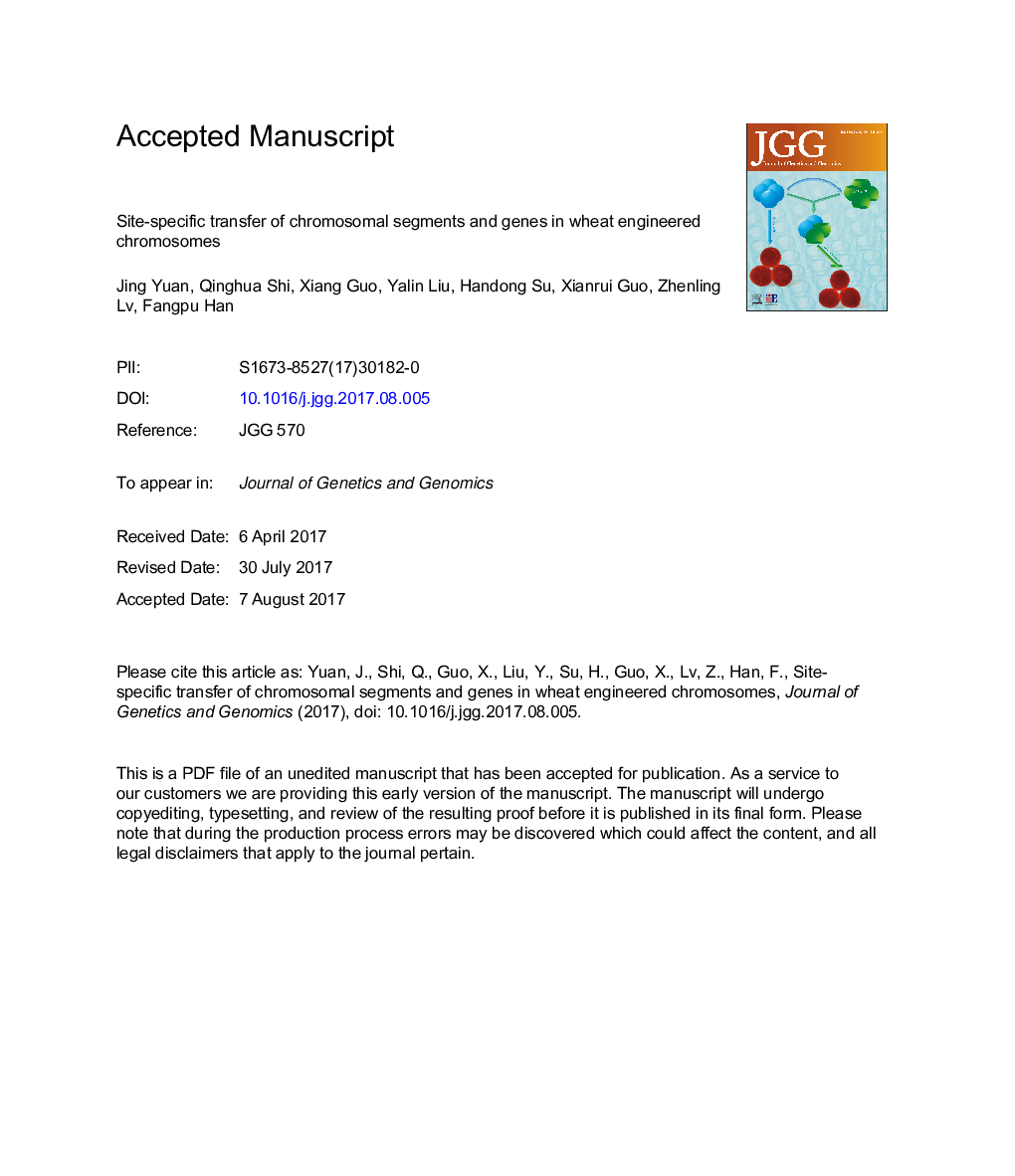| Article ID | Journal | Published Year | Pages | File Type |
|---|---|---|---|---|
| 8626321 | Journal of Genetics and Genomics | 2017 | 30 Pages |
Abstract
Recently, engineered minichromosomes have been produced using a telomere-mediated truncation technique in some plants. However, the study on transferring genes to minichromosomes is very limited. Here, telomere-mediated truncation was successfully performed in common wheat (Triticum aestivum) to generate stable truncated chromosomes accompanied by a relatively high frequency of chromosomal rearrangements. After the cross between transgenic parents, a promoter-less DsRed gene in a chromosome from one parent was transferred to another chromosome from the other parent at the site behind a maize ubiquitin promoter via the Cre/lox system. DsRed transcripts and red fluorescent proteins were detected in the recombinant plants. In one such seedling, transgenic signals were detected at the centric terminus of chromosome 4D and the distal terminus of chromosome 3A. Clear translocations could be detected at the transgenic loci of these two chromosomes. Intriguingly, signals of centric-specific sequences were co-localized with the translocated D-group chromosomal segment in the terminal region of chromosome 3A. Our results indicate that the Cre/lox system induces the gene swapping to the target chromosome and non-homologous chromosomal recombination simultaneously. These approaches could offer a platform to transfer large DNA fragments or even terminal chromosomal segments to other chromosomes of the natural genome.
Related Topics
Life Sciences
Biochemistry, Genetics and Molecular Biology
Developmental Biology
Authors
Jing Yuan, Qinghua Shi, Xiang Guo, Yalin Liu, Handong Su, Xianrui Guo, Zhenling Lv, Fangpu Han,
